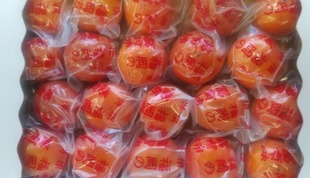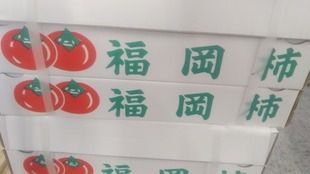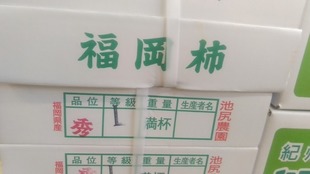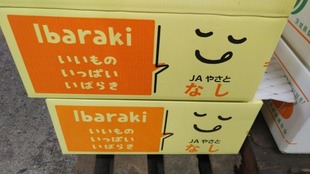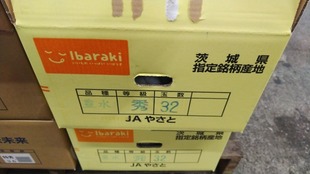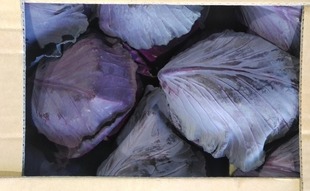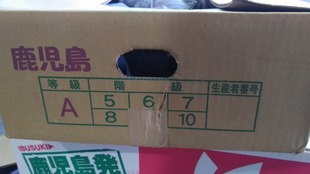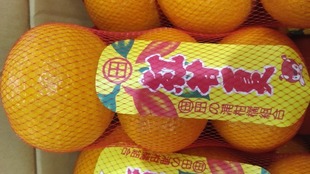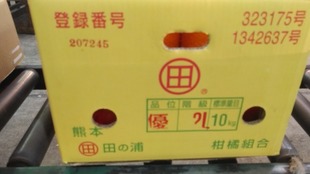【Product name】
King oyster mushroom by Shinshu Nakano
【Type】
Flammulina velutipes (Curt.(William Curtis): Fr.) Sing(Rolf Singer)
【Producing area】
Nakano City, Nagano Prefecture (JA Zen-Noh Nagano, JA Nakano City)
【Origin of name】
Apiaceae’s “Eryngium maritimum L.” was named “Pleurotus eryngii” because it parasitizes the dead roots of the genus Eryngos (eryngium).
【Major features】
With the aim of comprehensively developing commerce and industry in the district and also contributing to the promotion of the welfare of society in general, we gather the opinions of local commerce and industry, and carry out various activities such as policy proposals, management support, and regional promotion. From the “Shinshun Nakano Chamber of Commerce and Industry”, which is responsible for the 3rd Shinshu Nakano Future Ticket (new coronavirus infection (COVID-19) Business) seems to be extending the expiration date. It seems that this is because the number of people infected with the new coronavirus infection in Nakano City is increasing rapidly. I heard that the expiration date after the change is May 31, 2022. In April 2021, a partnership agreement was signed with Nakano City, Nagano Prefecture, which aims to promote settlement in the city and expand exchanges between citizens and city residents to promote the utilization of vacant houses. It was signed on the 31st of March. Efforts are being made to promote migration in connection with vacant homes, which are gaining increasing interest in rural migration, which is accelerating due to the corona disaster. A special page for Nakano City, an unoccupied house gateway, was newly established, and a platform for delivering unoccupied houses to “people who want to use” was developed. It seems that YADOKARI Co., Ltd., which has a large number of city promotion achievements, is fully supporting PR by simultaneously disseminating information on the attractiveness of Nakano City and 100 average properties. Against the backdrop of growing needs for rural migration due to the coronavirus, there are more opportunities to refrain from going out and work from home to prevent the spread of the new coronavirus infection, and there is now interest in working and living styles that are not tied to any location. It is said that it is higher than that. Among them, the original scenery of Japan spreads and promotes “just right country life”, and Nakano City, Nagano Prefecture, which promotes emigration and settlement by utilizing vacant houses in the city, and vacant houses nationwide for 100 yen or 1 million yen. It is an agreement aimed at promoting the utilization of vacant houses in Nakano City by forming a tag with the vacant house gateway that develops a platform that matches “people who want to let go” and “people who want to use” by posting at a price. This is Akiya Company Co., Ltd. (Jingu-mae, Shibuya Ward, Tokyo) and YADOKARI Co., Ltd. (Hinode Town, Yokohama City, Kanagawa), which jointly operate an unoccupied house gateway with Nakano City, Nagano Prefecture, and the Nagano Branch of the Nagano Prefecture Residential Land Building Trading Association. It seems to be a four-company agreement of Access Co., Ltd. (Nakano section of village Nakano City). Nagano Prefecture’s agriculture boasts a high first-class rice ratio with the highest yield of rice in Japan due to the advanced technology and diligence of farmers, and the core garden crops are lettuce, apples, etc. A variety of high-quality items are produced in a well-balanced manner, including items with the highest market share in Japan such as “grapes”, carnations, and Enoki mushroom. The Nagano Prefectural Agricultural Experiment Station is said to be conducting experimental research to solve problems in agriculture and fisheries, centered on six experimental sites(Agricultural Experiment Station(Ogawara, Suzaka), Fruit Tree Experiment Station(Ogawara, Suzaka), Vegetable Flower Experiment Station(Soga, Shiojiri), Livestock Experiment Station(Kataoka, Shiojiri), Nanshin Agricultural Experiment Station(Shimoichida, Takamori, Shimoina), Fishery Experiment Station(Akashinanakagawate, Azumino).)in the prefecture. The new “Nakano City”, which was created by the merger of Nakano City and Toyota Village on April 1, 2005, is located in the northeastern part of Nagano Prefecture. Two iconic mountains, Mt. Kosha (1351.5 m) to the northeast and Mt. Madarao (1381.8 m) to the northwest, are located across the Chikuma River, which runs through the center of the city. Villages are formed on the river terraces created by the Chikuma River and the alluvial fan formed by the Yomase River, and the urban area extends over the Nakano alluvial fan. Mt. Kosha is a beautiful mountain that rises independently, and is known as “Takayashiro”, and has been the object of worship since ancient times. At the foot of the river, the Yomase River forms a “Jusan cliff(It is a natural monument with the name of a historic site that has been designated by the national government as the “13 cliffs of Chogenbo breeding ground” (designated on November 14, 1953). It is a cliff formed by the Yomase River, which is a tributary of the Chikuma River, eroding the alluvial fan where the volcanic rocks of Mt. Kosha were carried and deposited by rivers and landslides. It seems that the Yomase River used to flow on the southwest side of Nakano City, but it is said that the flow moved to the north side due to the flood in 1406, and it became a position close to the present. The vertical cliff surface is maintained because the cliff surface was repeatedly eroded by the Yomase River. I heard that the cliff extends from northwest to southeast for about 1,500 m and maintains a height of 30 m or more in the central part. Rookery has been recorded in Spain, Germany, Japan, Norway, Russia, etc., but I heard that Japan has the most records. Rookery takes place in cliffs and holes in buildings, but the number of nests varies from two to 28. In Japan, cliff rookery has been discovered in Nagano and Yamanashi prefectures since around 1950. However, it seems that the number of pairs has decreased in these rookeries, and there are many rookeries that have disappeared. Among them, the breeding ground was designated as a national natural monument in 1953, and is famous as a rookery on a rare cliff in the world, which continues to breed even now.)” and flows north, pouring into the Chikuma River. To the south of the Nakano alluvial fan is the lowland off Entoku, which is further connected to Zenkojidaira in the southwest. In addition, Mt. Madarao consists of five ridges that look like spread palms, with four valleys and many swamps between them, and the terrain is rugged and complex. It joins the Madarao River and pours into the Chikuma River. To the east, Joshinetsu Kogen National Park Shiga Kogen is desired, and to the west, it is said that it is blessed with a scenic view of Hokushin Gogaku(Nasu Godake-Mt. Chausu, Mt. Asahi, Mt. Sanbonyaridake, Mt. Minamigassan, Mt. Kurooya. Echizen Godake-Mt. Haku, Mt. Hino, Mt. Monju, Mt. Ochi, Mt. Yoshinogadake. “Hokushin Gogaku-Mt. Iizuna, Mt. Togaku, Mt. Kurohime, Mt. Myoko, Mt. Madarao.” Mt. Aso-Mt. Neko, Mt. Takaoka, Mt. Nakadake, Mt. Eboshi, Mt. Kishima.). Iiyama City has a long north-south terrain with the Sekida Mountains in the west and the Mikuni Mountains in the east, centered on the Iiyama Basin, which extends to the lowest Chikuma River offshore area in Nagano Prefecture. There are Mt. Nabekura and Lake Hokuryu in the east, and it is said that it is a place blessed with many natural resources. The distance to neighboring cities is 36 km to Nagano City, 15 km to Nakano City, and 25 km to Myoko City, Niigata Prefecture. As the main transportation network, National Routes 117, 292, and 403 run in the city, and the JR Iiyama Line runs from Nagano City to Tokamachi, Niigata Prefecture. In March 2015, the Hokuriku Shinkansen extended to Kanazawa, and the Hokuriku Shinkansen Iiyama Station opened. The history of Iiyama has prospered as a transportation hub connecting Shinshu and the Sea of Japan for a long time, and has played a role as a distribution center for marine products such as salt and fish, and as an important station route in the development of Echigo and Dewa during the Yamato Imperial Court. It seems to be new. During the Warring States period, it became a strategically important place as a front-line base for Kenshin Uesugi’s departure from Kawanakajima, and in 1564 Iiyama Castle was built on the left bank of the Chikuma River. It seems that the city formation of Iiyama was centered around this Iiyama castle, and the function as a castle town was gradually improved as the castle owner changed several times. From the early to the middle of the Edo period, the logistics function using the Chikuma River and the highway leading to Echigo developed, and the development of new fields and the development of irrigation water were actively carried out, establishing the foundation of agriculture. It seems that it was done. After the Meiji Restoration, it became Iiyama Prefecture by the Abolition of the han system in 1871, and was further incorporated into Nagano Prefecture, and the town system was enforced in 1889. With the enforcement of the Municipal Merger Promotion Law in August 1954 after the war, Iiyama City was merged with Akitsu Village, Yanagihara Village, Tozama Village, Tokiwa Village, Mizuho Village, and Kijima Village. birth. After that, the city incorporated Ota Village and Okayama Village in 1956, and it seems that it has reached its present appearance. In 1893, with the opening of the Shin-Etsu Line that did not go through Iiyama, it gradually lost its function as a distribution base, and after that it developed mainly in agriculture, with local industries such as Iiyama Buddhist altars and Uchiyama paper. However, during the high economic growth period from the latter half of the 1955’s, economic growth stagnated due to the lack of conditions for industrial location and the handicap of being a heavy snowfall area, resulting in the outflow of population, mainly young people. Seems to have occurred. As for the culture and citizenship of the city, it seems that the spirit of solidarity and cooperation that is typical of the temple culture and snow country that has continued since the Edo period can be mentioned. Landscape of temples and shrines including the syoju hermitage of the famous priest syoju old man (Etan DOKYO, the revival of the Rinzai sect). The city’s culture and citizenship include the spirit of solidarity and cooperation that is typical of the Teramachi culture and snow country that has continued since the Edo period. , Ski resorts such as Madarao and Tokari, and natural resources such as the Chikuma River and Lake Hokuryu, seem to create a rich climate and charm suitable for Japan’s hometown. It seems that the city is characterized by the changes of the four seasons and the richness of the landscape from time to time. The climate of Iiyama seems to be an inland basin type climate from spring to autumn. In winter, the seasonal wind from the Sea of Japan creates an updraft due to the influence of the Sekida Mountains, which stretches from Mt. Madarao in the southwest to Mt. Nabekura in the northwest, so it seems to be one of the most heavy snowfall areas in Japan. The average annual temperature is about 11.1 degrees Celsius, the annual rainfall is about 1,555 mm, the average deepest snowfall is 176 cm on flat ground and 350 cm in mountainous areas, and about one-third of the year is covered with snow. There seems to be. In addition, Kosuge Shrine, Takeminakatatomino mikoto hikokamiwake Shrine, Inukai Shrine and other shrines that are said to have been built in the Nara period can be seen around the city, and it seems that the area has been open for a long time. In particular, it is said that the important highway connecting Shinano and Echigo (later valley highway) has been excavated since ancient times, and it seems that marine products from the Sea of Japan were brought to Shinano. In the Middle Ages, Kosuge Shrine flourished and many edifice and shrine were built in the precincts, and monzen town prospered with tempests and worshipers, and it was counted as one of the three major shugen places in Kita Shinano along with Togakushi and Iizuna. During the Warring States period, it became under the control of the Uesugi family, and it seems that a major renovation was carried out in 1564 with Iiyama Castle as one of the important bases for the invasion of Shinano. In the Edo period, the Iiyama domain was established and the domain office was set up in the castle, and the castle town was also maintained as the center of the surrounding area. Until the middle period, the feudal lord changed in a short period of time, and when the Honda clan became the Honda clan, the 7th generation was finally invaded until the Meiji Restoration. In 1868, the “Iiyama War”, which became the only fierce battlefield of the Yang Earth Dragon in Nagano Prefecture, was held, and the new government centered on the Matsushiro Domain and the Impulse Corps (former Shogunate Army: both false government forces) that had advanced from the Echigo Takada Domain. It seems that he suffered a lot of damage from the war with the army. Since it is a heavy snowfall area, it seems that it has developed mainly from paddy rice crops for a long time. In recent years, the production of fungal mushrooms by horticultural cultivation in facilities, vegetables such as green asparagus and good-tasting rice, livestock farming utilizing local brands, and agriculture using various production items such as flowers such as Paeonia lactiflora(The place of origin is northern China, distributed from eastern Siberia to northern China. The plant morphology is 50-80 cm in height. The roots thicken into narrow spindles or columns. Several stems are upright and hairless. The leaves are alternate, 1 to 2 times 3 dewa-like compound leaves, the leaflets are needle-shaped to oval, and sometimes 2 to 3 split. The flowering season is May. It has 1 to 3 large flowers of various kinds such as red and white on the top of the stem, and it seems that it often becomes a double petal. It seems that when taken as a medicine, it regulates the secretion of female hormones and makes the skin beautiful and glossy. The appearance and beauty of the flower is called “Apocalypse” (meaning supple and beautiful), and the name comes from the fact that it is extremely beautiful and beautiful.)have been developed. Iiyama’s specialty “Tomikura Fagopyrum vulgare” is 100% Fagopyrum vulgare powder, and it is said that the fiber of a plant called “Synurus pungens” is used as a binder. In the Tomikura district in Iiyama City, Nagano Prefecture, it is difficult to cultivate wheat because it is located in the mountains, and it is said that fibers have been refined from the perennial Synurus pungens that grows naturally in the surrounding area and buckwheat noodles have been struck. In areas other than Tomikura, he has buckwheat noodles that use Synurus pungens as a binder, and is called “Bokuchi Fagopyrum vulgare”. The name seems to come from the fact that the fiber was used for the matchlock fire in the old days. Also, it is said that it is called Phytolacca decandra as a wild vegetable. It is also designated as an intangible folk cultural property of choice in Iiyama City, but it seems that the number of soba noodles has decreased in recent years. In order to pass on the rare food culture to the next generation, in recent years, at the Iiyama Soba Promotion Study Group, Synurus pungens (Franch. Et Sav.) It seems that a project was carried out to make a manual for the cultivation / harvesting method of Kitam. (1933) and the manufacturing method for extracting fiber. In addition, the Fukushima rice terraces in Fukushima area, Mizuho district of the city are characterized by stone wall rice terraces, and it seems that they have been selected as one of the 100 best rice terraces in Japan. The masonry terraced rice fields are said to have been built in the Edo period, but it seems that there are some areas that need to be modified in the future, such as deterioration over time and some collapse due to recent changes in the weather. It seems that the repair of the partially collapsed stone wall was carried out in the form of a workshop by asking a professional craftsman who has worked on the restoration of historic masonry. The nearest station is JR Iiyama station, which takes about 20 minutes by taxi. I heard that it takes about 30 minutes by car from the Toyota Iiyama Interchange on the Joshinetsu Expressway to the northeast. It must be reaffirmed that cellulose is the most abundant plant resource in nature. (C6H10O5) n can produce glucose (C6H12O6), which is a raw material for alcoholic fermentation, by decomposing it with an enzyme called cellulase (hydrolyzing the glycosidic bond of β-1,4-glucan (for example, cellulose)). It is one of the important energy resources for oil substitution. Cellulose contained in wood and grass is protected by a substance called lignin, which prevents cellulase from decomposing cellulose, which is an obstacle to glucose production. Mushrooms, on the other hand, have a special ability to break down lignin efficiently, which is not found in other creatures. This is because it produces a powerful lignin-degrading enzyme, and mushrooms themselves can produce only the minimum amount of this enzyme they need. King oyster mushroom began to be cultivated for the first time in Aichi prefecture from the first half of 1990, and it seems that it spread all over the country in no time. JA in Nagano Prefecture also produces about 900 tons, and the main production areas are in the jurisdiction of JA Nakano City and JA Kita Shinshu Miyuki(In 2016, it merged with the Nagano agricultural cooperative and disappeared.), which are located in the northern part of Nagano Prefecture. It seems that you can enjoy various textures depending on how you cut it. Please visit our website for details. “Happy to the body”, It is used to mean daily intake of mushrooms and fermented foods made using microorganisms. “Increase good bacteria”, Probiotic provides some positive effects for your health. Lactobacillus (composed of more than 100 species, phylogenetic and phenotypically diverse, Lactobacillus fructivorans, L. hilgardii, L. paracasei, L. rhamnosus etc. of the Lactobacillus genus) Sporogenes (LS-66) produces good bacteria and keep good digestion functions. This method for obtaining a KX-EN2001 fungal strain (FERM P-20576) which belongs to the fungal strain of the genus Pleurotus is provided by crossing the spores of the Pleurotus eryngii with those of the Pleurotus nebrodensis, and then culturing the crossed fungi by using a Pleurotus eryngii-culturing medium obtained by mixing saw dust powder and nutrition sources, and adjusting water content (Patent Office). Last but not least, it is an edible mushroom that is distributed from the Mediterranean coast to Central Asia. The Aichi Forest and Forestry Technology Center succeeded in artificial cultivation for the first time in Japan in 1993. It’s a large mushroom that doesn’t have a habit and is chewy and doesn’t lose its shape, so it seems to be suitable for all Japanese, Western, and Chinese dishes. This mushroom is rich in dietary fiber, potassium, etc., and is also a health food whose effect of promoting the excretion of fat and cholesterol has been confirmed in university experiments. In addition, in subsequent research at the center, we developed two excellent varieties with high yield and shortened cultivation period, and the new varieties are “Tottoki: Spare (No. 1)” which means “much-valued” in this region. No. 2) ”.
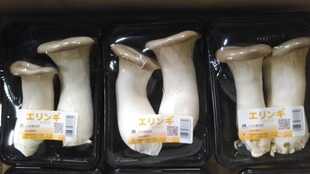
The lovingly cultivated elingi mushroom has a white and thick handle with a brown flat umbrella, which is characterized by its elastic and crunchy texture. It has no habit, is easy to eat, and is said to have a texture similar to abalone. C12H22O11 (scientifically revealed around 1832, discovered by the Wiggers in rye horns, and separated from Larinus spp. (Made by weevil in the Persian region) by Versaro in 1859. It seems to have been named) and contains nutrients such as vitamin B1. The aim is that the edge of the umbrella is caught, the stem (handle part) is white and hard, and the shape is good. A refrigerator is a good way to store it. Wrap it in a plastic bag or wrap, seal it, and store it. Similar to Bunashimeji mushrooms, it may have something like white cotton, which is called “aerial hyphae” and is harmless because the hyphae grow from the mushroom itself after harvesting.
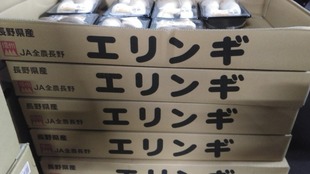
In the cold winter, NAKANO began cultivating mushrooms as a side business to replace farmers’ migrant workers. The problem of reduced sales during the off-season is solved by “migrating to other areas”. Acquire not only rewards but also cultivation techniques and utilize them in your own farming during the busy season. It seems that the new style of spending the off-season, which is a big issue for farmers, was done individually by each farmer, from mycelial culture to production control. However, in the early Heisei era, multiple individual producers jointly invested to introduce high-performance equipment and machines, and established a culture center that collectively manages mycelial culture, which is the most difficult in the production process. rice field. I hear that this stabilizes the culture, reduces costs, and enables efficient production.
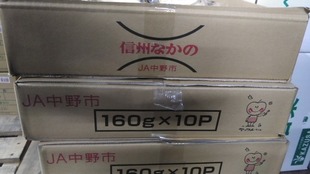
Nakano City, Nagano Prefecture has the highest production of enoki mushrooms in Japan. This agricultural product is odorless, and when chewed raw, it is slightly sweet and crisp, and has no habit, so it is popular as a mushroom that has a wide range of cooking uses. When used for cooking, it is usually cooked, and if it is boiled for a long time, it becomes watery and crisp, so if you heat it in the microwave or steam it over low heat, it will taste good. When boiling, it is better to dive in boiling water. The way to distinguish them is that they grow with many shafts overlapping, the bulk does not open completely, the color is white and glossy, and the one with a solid feeling has a special scent and taste. Since it grows even after harvesting, it is preferable to eat fresh food earlier than to store it.
